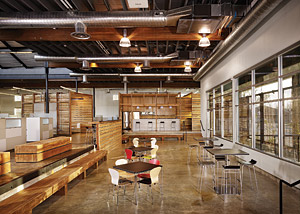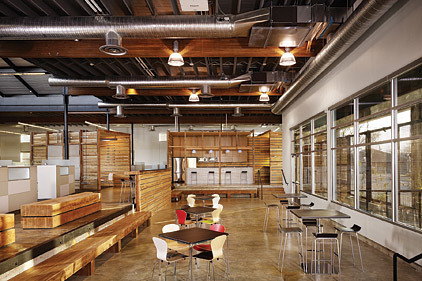
|
| According to Randy Scholnick, sales and project manager at Sirius Mechanical, “There really isn’t any customer that can’t benefit from VRF technology.” |
Sirius Mechanical Inc. is in the business of making money and its investment in variable refrigerant flow (VRF) technology is paying off. The business opened its doors in Moreno Valley, Calif., on Dec. 14, 2004, and in June 2005 the company installed its first VRF system. From then on, VRF equipment has been a consistent part of its product offering.
“There really isn’t any customer that can’t benefit from this technology,” said Randy Scholnick, sales and project manager at Sirius Mechanical. With that in mind the company pitches VRF to just about every potential customer.
What does pitching VRF mean for Sirius Mechanical and what could it mean for other contractors?
Outpace the Competition
According to Scholnick, VRF can mean competitive differentiation. Adding new capabilities and products can help contractors do just that. “VRF has enabled us to differentiate our contracting business versus others that do conventional work,” noted Scholnick. “It requires a high level of skill and competence to install VRF systems.”
Sirius Mechanical has completed approximately 30 venues implementing VRF, and the company’s reputation is growing. It is this reputation and experience that increased demand to a point that “even during tough economic times our profitability has remained high,” he said.
Marketing VRF for the company has not been a primary focus in taking on VRF installations. What Sirius Mechanical has found is that working relationships with existing VRF clients is providing new installation opportunities in those clients’ other facilities.
Scholnick noted, “We receive a lot of leads about VRF-specified projects and try to capture as many of those as possible.”
According to Scholnick, the VRF business is not for every contractor. There needs to be a lot of attention paid to details for product specifications and capacities. Piping, wiring, and controls are other facets of installation, repair, and maintenance that need to be considered. “This is, however, a rewarding market segment if a company is looking for solid business,” said Scholnick. “Our technicians know the product inside and out, which has resulted in very few service calls or issues.”
Add to the Toolbox
For Joe Strickler, pitching VRF adds another tool to his business toolbox. As president of Refrigeration & Electric Service Inc. in Winter Haven, Fla., Strickler sees VRF as an enhancement to his equipment lineup. “I simply offer this as another option. There are some applications with variable loads — outside air units, conference rooms, computer server rooms, master bedroom suites, houses with poor access for ducts, etc. — that just work better with VRF,” he explained. “It also allows zoning with very high efficiency and no ‘air noise.’ ”
Strickler’s residential and commercial business has been in existence for 61 years and has been installing VRF equipment for the past three years. His advice to contractors looking to enter the VRF market is to get proper training and fully understand VRF applications and installations.
“Then, be sure to keep your mind open to offering this solution,” he said. “I would suggest you price VRF jobs based on labor cost. If you price based on percent, the high equipment cost will price you out of the market.”
Take the Challenge
Russ Donnici, president of Mechanical Air Service Inc. in San Jose, Calif., understands that there can be challenges in working with VRF. However, he has embraced these challenges and worked through the situations that can stem from adding any new equipment to a company’s product offering.
“We have quoted several of these systems that have been specified by engineers or our own jobs,” he explained. “In many cases, the projects switch to less expensive equipment.”
Mechanical Air Service doesn’t directly market VRF because of its cost, according to Donnici, but despite some of his customers’ resistance to the price, he feels the technology is a good one.
His suggestions to contractors looking to enter the VRF market echoed Strickler’s when it comes to getting lots of training. “You should have an excellent understanding of refrigeration systems and controls,” he said.
VRF Future
As with any forecasting, the future of VRF is unknown. Ask Scholnick, however, and he is confident that VRFs future is strong and growing. The recent certification from the Air Conditioning, Heating, and Refrigeration Institute (AHRI) — which can be an important requirement for many rebates, tax credits, and other programs — should help contractors legitimize VRF efficiencies and possibly lend to its growth.
“The past six years of our company’s history have been historic, in that we’ve established an excellent reputation with VRF installations,” said Scholnick. “We see the world of VRF growing exponentially during the next 10-20 years and are poised to take advantage of the demand from building owners, architects, mechanical engineers, and facility managers who see the short- and long-term benefits of this technology.”
Sidebar: Contract Dollars APP
Sirius Mechanical Inc. in Moreno Valley, Calif., regularly installs variable refrigerant flow (VRF) equipment and the contract dollars are adding up. What kind of VRF jobs have they installed and what do the contract totals look like? Here are just some of what the contractor has completed over the past few years.
• USC Kappa Kappa Gamma Sorority House — $375,000
• Willow Creek Ranch — $550,000
• University of California Los Angeles — $810,000
• Elan Hotel — $570,000
• Wilshire Boutique Hotel — $999,475
Publication date: 11/21/2011



Report Abusive Comment